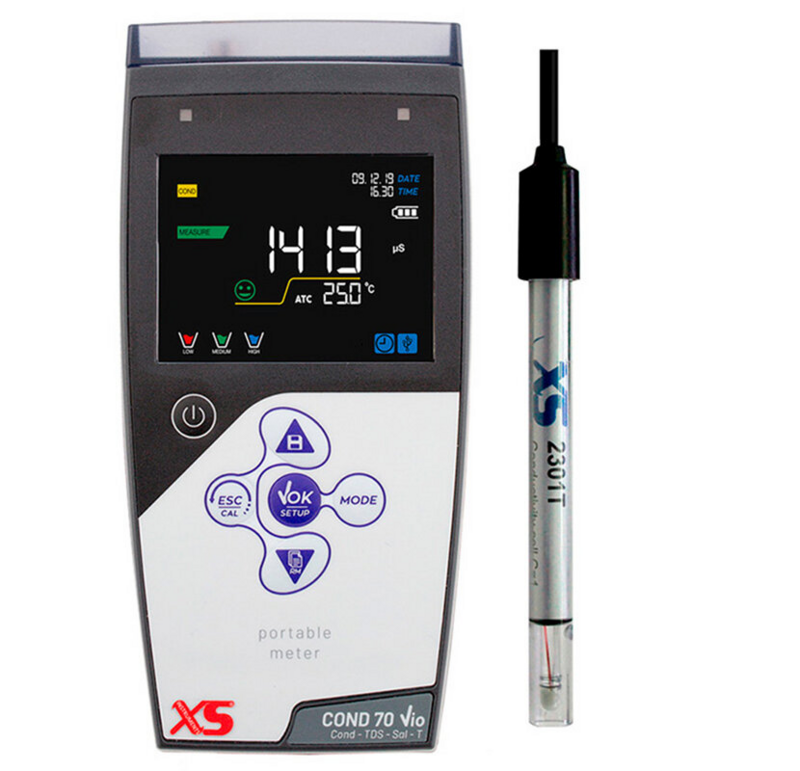Conductivity meters
CONDUCTIVITY...MADE IN ITALY! Conductivity meters, or conductimeters, are digital instruments that can measure the electrical conductivity of liquids. Conductivity is a very important parameter in the analysis of water; whether potable, wastewater or from industrial processes. Conductivity meters find use in Chemical industries, laboratories, printing plants, schools and universities, wastewater treatment, cooling towers and boilers. The XS Instruments® line, MADE IN ITALY, includes a wide range of benchtop instruments for laboratory measurements and portable instruments for field measurements. In particular, the new Series 7/70 Vio series of portable conductivity meters features an innovative high-definition color LCD display for simultaneous indication of conductivity and temperature, stability indicator and calibration data. IP 57 watertight for effective sealing in the field. Both instruments, from conductivity measurement, directly express ALSO the TDS (Total Dissolved Solids) value. The XS COND 70 Vio conductivity meter, in addition to the addition of Salinity, is distinguished by a mode (automatic or manual) of Data Logging, up to 1000 in GLP format. CELLS AND CONDUCTIVITY MEASUREMENTS: Conductivity measurement is carried out through a probe called conductivity cell that is connected to the conductivity meter and immersed in the solution to be measured; the measured value is expressed in µS/cm or mS/cm (submultiples of the main unit of measurement S/cm). There are different conductivity cells for different measurement ranges: Cell with constant C=1 measuring range: 10 µS ... 10 mS Cell with constant C=0.1 measuring range: 0.1 µS ... 1 mS Cell with constant C=10 measuring range: 100 µS ... 200 mS Like all physical parameters, conductivity is also affected by temperature variation for this reason conductivity cells also integrate a temperature sensor inside them to compensate for this variation and have the highest possible accuracy. Thanks to temperature compensation, it is possible to express the conductivity value at a single reference temperature (usually 20°C or 25°C) regardless of the actual temperature of the sample.




